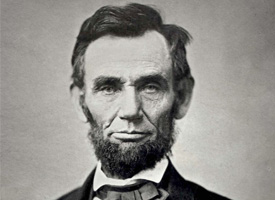- Details
 Clyde Tombaugh was born in Streator in 1906. His interest in astronomy developed from looking through his uncle’s telescope as a child. Unsatisfied with store-bought telescopes, Tombaugh began building his own telescopes, one of which helped him accurately describe Jupiter and Mars.
Clyde Tombaugh was born in Streator in 1906. His interest in astronomy developed from looking through his uncle’s telescope as a child. Unsatisfied with store-bought telescopes, Tombaugh began building his own telescopes, one of which helped him accurately describe Jupiter and Mars.
Tombaugh earned a job at the Lowell Observatory in Arizona where he was tasked with photographing the night sky over several months and examining the photographs to try and find an unidentified moving point of light. After ten months of detailed research, Tombaugh discovered the planet on February 18, 1930 and named it Pluto. It was determined that Pluto was the ninth planet in our solar system and was classified so until 2006 when the plant was re-classified as a dwarf planet.
In addition to discovering Pluto, Tombaugh also discovered 15 different asteroids and named them after himself, his wife, his children and grandchildren.
Learn more:
Clyde Tombaugh
Academy of Achievement: Clyde Tombaugh
- Details
 An Illinois farmer named Joseph Glidden patented barbed wire on November 24, 1876.
An Illinois farmer named Joseph Glidden patented barbed wire on November 24, 1876.
Joseph Farwell Glidden, a New Hampshire native who moved to Illinois in 1843, is credited with patenting barbed wire in DeKalb. Using a coffee mill to help construct his model, Glidden was able to fixate pointed barbs onto metal wire and twist another wire around it to keep the barbs in place.
Glidden created the Barb Fence Company, which wound up making him one of the wealthiest men in America before he died. The versatile material has had numerous historical uses such as fencing in cattle and livestock, defending borders during times of war and as fence topping on prison grounds.
Glidden’s original patent has remained largely unaltered as contemporary versions of barbed wire continue to follow his model.
Learn more:
The History of Barbed Wire
View the original patent picture here
- Details
 Abraham Lincoln, one of the most recognizable Presidents in U.S. history, migrated to Illinois with his family in his early twenties, living several places before settling in New Salem. Lincoln was elected to the Illinois state legislature in 1834 and moved to Springfield a short time later to begin practicing law.
Abraham Lincoln, one of the most recognizable Presidents in U.S. history, migrated to Illinois with his family in his early twenties, living several places before settling in New Salem. Lincoln was elected to the Illinois state legislature in 1834 and moved to Springfield a short time later to begin practicing law.
Ulysses S. Grant, America’s 18th President, served after President Johnson during Reconstruction after the Civil War. A well-known Union Army hero, Grant was living in Galena when the war broke out, leaving to command the Union army.
Ronald Reagan was the only president born in Illinois. Reagan was raised in Dixon and attended Eureka College before leaving Illinois. Reagan spent most of his adult life in California, however, and considered that state home.
President Obama moved to Chicago in his mid-twenties, working as a community organizer on the South Side before entering law school in 1988. Obama taught law at the University of Chicago and was elected to the Illinois Senate in 1996. The rest, as they say, is history.
Learn more:
Abraham Lincoln's Biography
Ulysses S. Grant's Biography
Ronald Reagan's Biography
President Obama's Biography
- Details
 Since first convening in 1789, the U.S. Senate has had nine African-American members, three of whom from Illinois.
Since first convening in 1789, the U.S. Senate has had nine African-American members, three of whom from Illinois.
Carol Moseley-Braun broke many barriers when she assumed office in 1993. Not only was she the fourth African-American U.S. Senator, she was also the first African-American woman and the first female from Illinois to serve in the Senate.
Barack Obama became the fifth African-American U.S. Senator when he was elected in 2005, followed by Roland Burris, who was appointed to fill Obama’s seat in 2008.
The make-up of the current Senate includes two African-American Senators, Cory Booker from New Jersey and Tim Scott from South Carolina.
Learn more:
Breaking New Ground – African American Senators
- Details
 Abraham Lincoln gave his historic Farewell Address to a crowd of more than 1,000 Springfield townspeople 154 years ago today.
Abraham Lincoln gave his historic Farewell Address to a crowd of more than 1,000 Springfield townspeople 154 years ago today.
Recently elected to serve as the nation’s 16th President, Lincoln was leaving Springfield en route to Washington D.C. when he gave the famous speech from a train platform. With the nation on the brink of Civil War, Lincoln’s speech was somber, telling the crowd “I now leave, not knowing when, or whether ever, I may return, with a task before me greater than which rested upon Washington.”
The speech was delivered at the Great Western Depot on 10th and Monroe Streets, a building that is still standing.
Learn more:
Abraham Lincoln’s Farewell Address Revealed His ‘Tragic Optimism’ (U.S. News & World Report)
Abraham Lincoln Online
More Articles …
- Did You Know? Olympic gold medalist Jackie Joyner-Kersee is from Illinois
- Did You Know? The Chevy Volt’s lithium-ion battery was developed in Illinois
- Did You Know? The first mail-order catalog business was started in Illinois
- Did You Know? Chicago ranks 2nd in commuter rail passengers
- Did You Know? The modern dialysis machine was invented in Illinois





